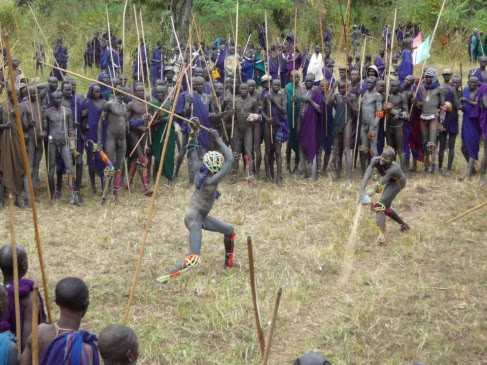 |
| Donga stick fighting in Ethiopia |
I'm sure to want to review this later...but I gotta ask: how long should your stick be?
The simple answer is that's up to you.
I wanted a stick that doubled as a walking stick so a Jo made a lot of sense to me because it reached up to my arm pit.That way I only carried around the length I needed to get from A to B.
But if I was hiking a lot off road, I'd want a taller staff because I'd probably be traversing hillsides ups and down.
A short stick would suit climbing up but a taller one is handy walking down.
So a stick up to my chin would be, in my estimation, a good height for walking in the bush I know.
If I was working with animals -- ruminants like sheep and goats -- a longer staff would be practical for sorting the livestock and directing them. The traditional curve on top was used to pick up and recover lambs and maybe separate sheep from the flocks by hooking onto them.
Religion had nothing to do with farm work tools.
But to protect yourself -- say from aggressive dogs when out walking -- a short staff would suffice.
With cattle, inasmuch as I can find a trend (eg: at shows or among African cattle herders), a light flexible stick is preferred in order to remind the bovine who is boss.
If you seek to spin the staff physics dictates that a length of your own height or even a tad longer is OK. Otherwise, the arc would not complete 360 degree spins.
Bigger than that, and you are back in the days of the medieval fighting staff where you surely want to keep the advancing army at a long length.
These lengths also have traction in past conflicts either as adaptions of on-hand tools or as defence against swords or spears.
Some sticks are shorter still like the Philippines Arnas or the Irish shillelagh sometimes. Some shorts are used martially in pairs.
The world of sticks is a marvellous mix.

